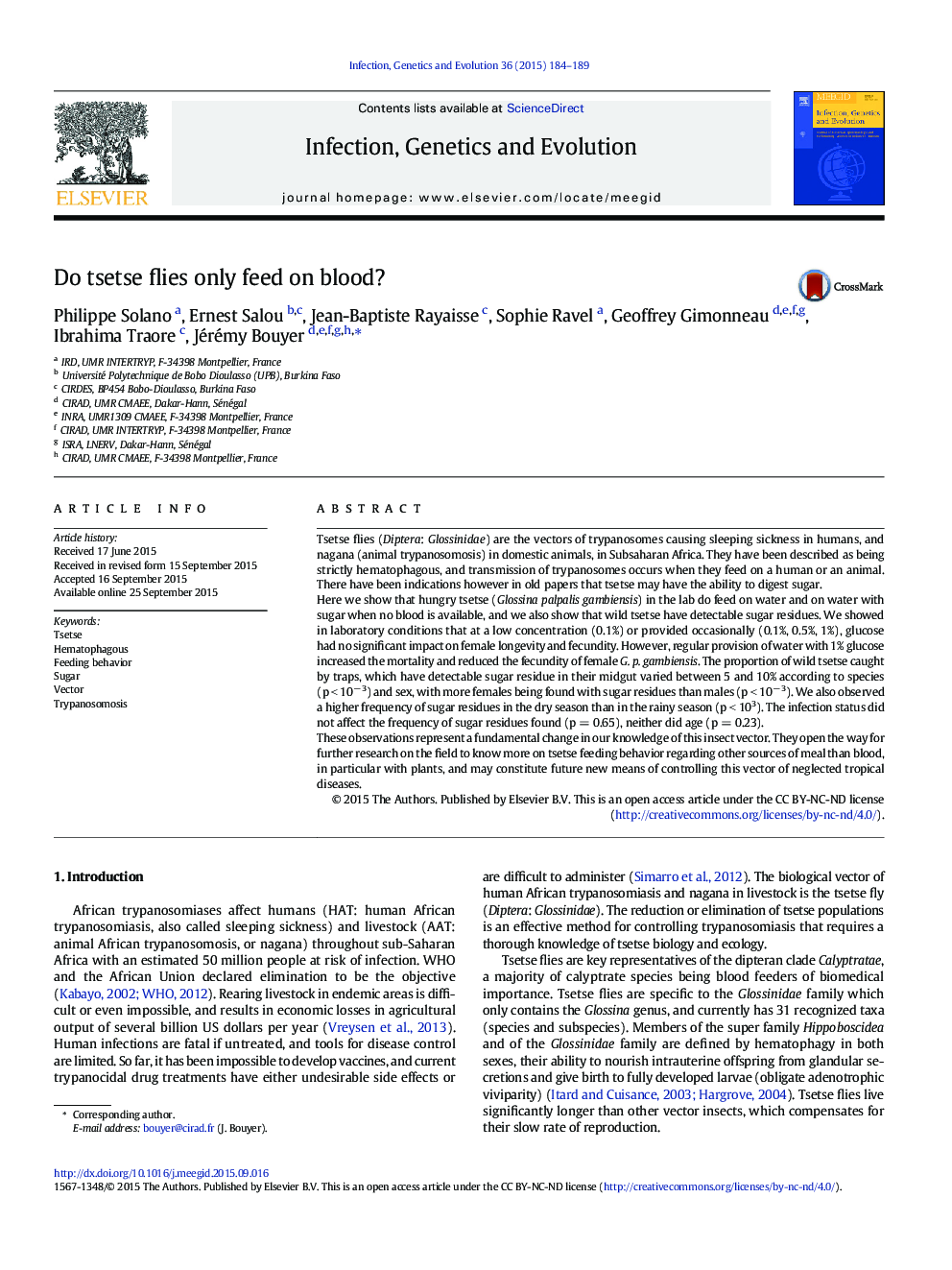| کد مقاله | کد نشریه | سال انتشار | مقاله انگلیسی | نسخه تمام متن |
|---|---|---|---|---|
| 5908547 | 1570167 | 2015 | 6 صفحه PDF | دانلود رایگان |

- Tsetse flies are the vectors of human and animal trypanosomes.
- Tsetse are considered to be strictly hematophagous.
- Here we show that hungry tsetse do feed on water and on water with sugar in the lab.
- We also show that wild tsetse have detectable sugar residues.
- The proportion of wild tsetse with sugar residues varied with species, sex and season.
Tsetse flies (Diptera: Glossinidae) are the vectors of trypanosomes causing sleeping sickness in humans, and nagana (animal trypanosomosis) in domestic animals, in Subsaharan Africa. They have been described as being strictly hematophagous, and transmission of trypanosomes occurs when they feed on a human or an animal. There have been indications however in old papers that tsetse may have the ability to digest sugar.Here we show that hungry tsetse (Glossina palpalis gambiensis) in the lab do feed on water and on water with sugar when no blood is available, and we also show that wild tsetse have detectable sugar residues. We showed in laboratory conditions that at a low concentration (0.1%) or provided occasionally (0.1%, 0.5%, 1%), glucose had no significant impact on female longevity and fecundity. However, regular provision of water with 1% glucose increased the mortality and reduced the fecundity of female G. p. gambiensis. The proportion of wild tsetse caught by traps, which have detectable sugar residue in their midgut varied between 5 and 10% according to species (p < 10â 3) and sex, with more females being found with sugar residues than males (p < 10â 3). We also observed a higher frequency of sugar residues in the dry season than in the rainy season (p < 103). The infection status did not affect the frequency of sugar residues found (p = 0.65), neither did age (p = 0.23).These observations represent a fundamental change in our knowledge of this insect vector. They open the way for further research on the field to know more on tsetse feeding behavior regarding other sources of meal than blood, in particular with plants, and may constitute future new means of controlling this vector of neglected tropical diseases.
Journal: Infection, Genetics and Evolution - Volume 36, December 2015, Pages 184-189